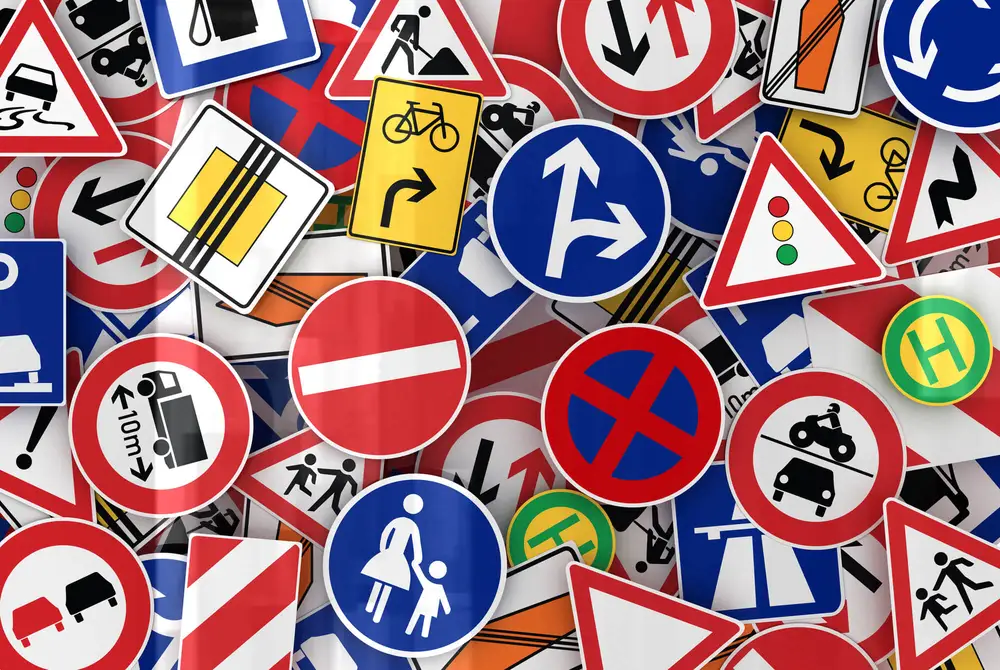Understanding the Purpose of DOT-Compliant Traffic Signs
Before investing in DOT-compliant traffic signs, it is essential to understand what makes these signs different from standard signage. The Department of Transportation establishes strict regulations that determine the design, size, material, reflectivity, and placement of all official roadway signs. These standards exist to ensure consistency and safety across every public road in the United States. Whether a sign is installed on a quiet rural street or at a busy metropolitan intersection, it must meet the same federal requirements so drivers experience consistent information and predictable visual cues. Businesses, property owners, and municipalities that install signs on roads with vehicle traffic must ensure their signage meets DOT guidelines. Failure to do so can result in compliance violations, liability issues, or the need to replace non-compliant signs at additional expense. Understanding these standards before placing an order can help avoid mistakes and guarantee that your signage performs exactly as intended.
Why DOT Compliance Matters for Safety and Liability
DOT-compliant traffic signs are more than a formality. They play a crucial role in roadway safety. The correct design and placement of signs help prevent accidents by giving drivers clear instructions, warnings, and regulations. These signs are engineered to be visible in a wide variety of conditions, including bad weather, nighttime driving, and high-speed environments. When signage is non-compliant, it can create confusion or reduce driver reaction time, raising the risk of collisions. Beyond safety, liability is another major reason compliance matters. If an accident occurs near or involving a sign that does not meet DOT standards, the property owner or organization responsible for installing the sign could face legal consequences. Ensuring compliance protects your organization, improves safety outcomes, and preserves public trust in roadway infrastructure.
Federal Regulations That Affect Your Sign Order
The Manual on Uniform Traffic Control Devices, often referred to as the MUTCD, is the central resource that defines how all DOT-compliant traffic signs must be designed and installed. This manual outlines everything from sign colors and shapes to required retroreflective materials. For example, stop signs must be octagonal, use a very specific shade of red, and meet minimum reflectivity requirements. Speed limit signs must follow exact formatting rules, including typeface, letter height, and spacing. When ordering signs, it is important to choose a supplier that produces MUTCD-compliant signage and understands DOT standards thoroughly. Not all sign manufacturers specialize in regulatory traffic signs, and cutting corners can result in signs that look correct but fail to meet the technical specifications needed for full compliance.
Materials and Reflectivity Requirements
One of the most important details to consider before ordering DOT-compliant traffic signs is the type of material and reflectivity level your signs need. DOT regulations classify retroreflective sheeting into multiple grades. These reflective materials help drivers see and understand signs at night when headlights illuminate them. The most common types include engineer grade, high-intensity prismatic, and diamond grade. The appropriate grade depends on where the sign will be installed. For instance, signs on high-speed roads typically require higher reflectivity than signs used in low-speed parking areas. Additionally, sign backing materials such as aluminum must meet certain durability and corrosion resistance standards. Choosing quality materials ensures that your signs remain compliant and effective over many years of exposure to sun, wind, moisture, and temperature changes.
Choosing the Right Size and Shape
Size is another critical factor in DOT compliance. Many customers underestimate how large official road signs must be. The MUTCD provides detailed size charts for every type of regulatory, warning, and guide sign. For example, a standard stop sign must be at least 30 inches tall for most roadways, and larger options are required for multi-lane intersections or high-speed environments. Warning signs, such as curve ahead or pedestrian crossing signs, also have size requirements based on location and traffic conditions. Shapes matter too. Regulatory signs typically use rectangles, squares, or octagons, while warning signs use diamond shapes. These distinctive shapes help drivers identify the sign type at a distance, even before they read the content. When selecting a sign size or shape, avoid guessing. Always follow the MUTCD guidance or consult with a knowledgeable supplier.
Understanding Customization Limits
Many organizations want to customize their signs with logos, colors, or language tailored to their property. However, customization is limited when it comes to DOT-compliant traffic signs. Regulatory and warning signs must follow strict guidelines for color, typography, and layout. Adding decorative elements or altering required features can render a sign non-compliant. That said, some signs, especially guide signs, can incorporate limited customization as long as key design elements remain within federal standards. Before ordering, be clear about how much customization your sign permits. When in doubt, ask your supplier to confirm whether your idea fits within MUTCD regulations.
Placement Considerations That Affect Compliance
Ordering the right sign is only half of compliance. Proper placement is equally important. Sign installation rules dictate height, lateral position, spacing, and visibility requirements. Incorrectly installed signs can cause confusion or fail to meet federal expectations. For example, signs must be positioned so that they are easily visible from the appropriate distance and angle. Obstructions like trees, parked vehicles, or other signs can reduce visibility. Mounting height also varies depending on location. Urban areas typically require higher mounting heights due to pedestrian traffic, while rural areas may allow lower mounting. If you are installing signs yourself, make sure to carefully review placement guidelines or work with a trained installer.
Working With a Trusted Sign Supplier
Not all sign providers are equipped to produce DOT-compliant traffic signs. Before placing an order, research potential suppliers to ensure they follow current MUTCD standards, use approved reflective materials, and manufacture signs that can withstand outdoor conditions for many years. A reputable supplier can help you understand which signs you need, what materials are appropriate, and how to ensure full compliance. They can also confirm when a sign requires specific text sizes, symbols, or color formats. Working with an experienced team saves time, prevents costly errors, and ensures that your signs are ready for installation as soon as they arrive.
Budgeting for Quality and Longevity
Many buyers focus primarily on the upfront price, but quality is a more important factor when ordering DOT-compliant signs. Lower-cost signs may use inferior materials that fade quickly, lose reflectivity, or warp in harsh weather. Investing in higher-quality materials leads to longer service life and reduces the need for early replacement. Additionally, better materials maintain visibility and compliance over time, protecting you from potential safety and liability issues. When planning your budget, consider long-term durability rather than short-term savings.
Final Checks Before Ordering
Before placing your final order, take time to review all specifications. Confirm the correct sign type, size, reflectivity level, mounting hardware, and quantity. Ensure the text and symbols meet MUTCD requirements. Verify that your placement plan aligns with installation guidelines. If you are unsure about any detail, ask your supplier for clarification. It is far easier to adjust an order beforehand than to correct non-compliant signage after production.
Conclusion
Understanding the rules and requirements surrounding DOT-compliant traffic signs ensures that your project is safe, legal, and effective. By reviewing federal standards, selecting proper materials, verifying size and layout specifications, and choosing a reputable supplier, you set your signage project up for long-term success. With the right preparation and attention to detail, ordering DOT-compliant signs becomes a smooth and straightforward process.





























